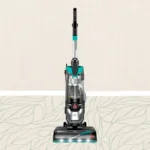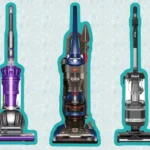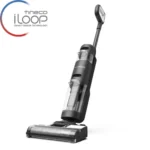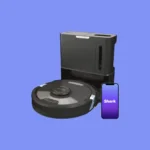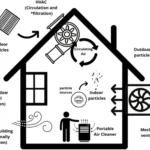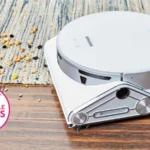Our homes are meant to be a safe haven, a place where we can relax and unwind after a long day. However, for many people, the air quality of their homes can make this a difficult task. Allergens, tiny particles that can trigger allergic reactions, are often present in the air we breathe. This is particularly problematic for those who suffer from allergies or asthma. Fortunately, the rise of smart vacuum cleaners has made it easier to remove these allergens and improve indoor air quality. In this article, we’ll explore the ins and outs of how smart vacuum cleaners work to remove allergens and the benefits they offer for allergy sufferers.
What are Allergens and Why are They Harmful?
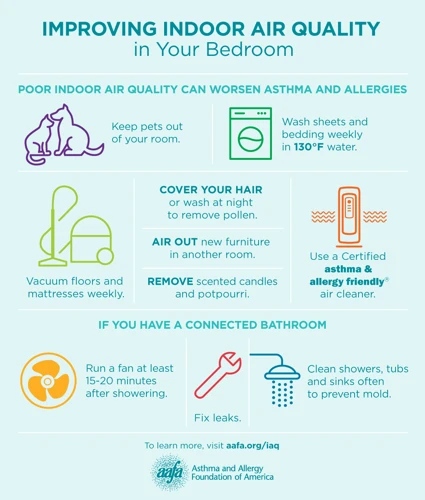
Have you ever felt itchy eyes or a runny nose after cleaning your home? The culprit could be allergens, which are substances that cause allergic reactions. Allergens can come from many sources, including dust mites, pet dander, and pollen. When these particles get inhaled, they can cause respiratory issues, particularly for people with allergies, asthma, or other respiratory conditions. In this section, we will explore the definition and harmful effects of allergens to better understand why smart vacuum cleaners with advanced features like HEPA filters and mapping technology are essential for reducing these substances in your home.
The Definition of Allergens
Allergens are substances that are foreign to the body and can cause an allergic reaction. They are found both indoors and outdoors and can range from pollen and dust mites to pet dander and mold. When someone with allergies comes into contact with an allergen, their immune system responds by producing antibodies that cause symptoms such as sneezing, coughing, and itchy eyes. Allergens can also trigger respiratory issues such as asthma and bronchitis, making it important to keep them at bay.
It’s essential to note that not all allergens are visible to the naked eye. For instance, dust mites are microscopic creatures that live in carpets, fabrics, and upholstery. They are major triggers of asthma and other respiratory issues in the home. Pet dander, which is made up of tiny skin flakes, saliva, and urine, is another common allergen that can be difficult to spot. While regular cleaning can help reduce allergen levels, smart vacuum cleaners provide an advanced level of cleaning that can effectively remove these hidden allergens.
Using a smart vacuum cleaner can significantly reduce the levels of allergens in the home, improving indoor air quality and reducing the risk of respiratory issues. With their powerful suctioning capabilities, these cleaners can reach deep into carpets and furniture to remove dust mites and pet dander that may have settled there. Choosing a smart vacuum cleaner with a HEPA filter can also trap allergens and prevent them from re-entering the air.
Smart vacuum cleaners are a valuable tool for allergy sufferers, and by reducing the levels of allergens in the home, they can help prevent allergic reactions and respiratory issues. With regular use and maintenance, a smart vacuum cleaner can be an effective solution for improving indoor air quality and reducing the risk of health problems. For more information on the benefits of smart vacuum cleaning, check out our article on how smart vacuum cleaners can reduce respiratory issues.
Why Allergens Harmful to Our Health
Allergens are harmful to our health because they can cause allergic reactions and respiratory problems. Allergic reactions occur when the immune system overreacts to a foreign substance, such as pollen or dust mites, in the body. The symptoms of allergic reactions can include itchy eyes, runny nose, sneezing, coughing, and difficulty breathing. Respiratory problems, such as asthma, can also be triggered by exposure to allergens.
Allergens can be found in many places, including the air we breathe and the surfaces we touch. Dust mites, pollen, pet dander, and mold spores are some of the most common allergens found in homes. These allergens can be especially troublesome for those with allergies or respiratory problems, causing them to experience symptoms more frequently and more severely.
While some allergens may not cause any immediate symptoms or harm, frequent exposure to them can lead to long-term health problems. Studies have shown that exposure to high levels of dust mites and other allergens can increase the risk of developing asthma. In addition, allergens can also exacerbate existing respiratory conditions, making it difficult for those with asthma or other conditions to breathe.
To combat the harmful effects of allergens, it’s important to take steps to reduce exposure to them. One effective way to do this is through smart vacuum cleaning. With the use of high-efficiency particulate air (HEPA) filters and powerful suctioning capabilities, smart vacuum cleaners are able to remove allergens from surfaces and the air, improving indoor air quality and reducing the risk of allergic reactions and respiratory problems.
To learn more about how smart vacuum cleaners work to remove allergens, click here.
The Importance of Indoor Air Quality
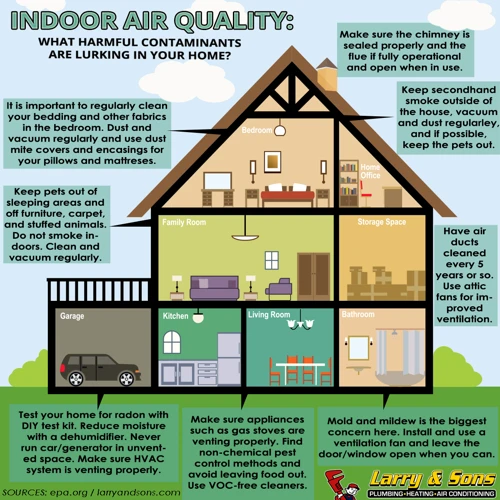
The quality of the air we breathe has a direct impact on our health and well-being. Poor indoor air quality can have a negative effect on our respiratory system, causing allergies, asthma, and other breathing-related problems. It is important to maintain a clean and healthy indoor environment to reduce the risk of such health issues.
One of the major contributors to poor indoor air quality is the presence of allergens. Allergens can include a wide range of substances such as pollen, pet dander, dust mites, and mold spores which can trigger allergic reactions in many people. Even if you are not allergic to a particular substance, repeated and prolonged exposure to it can result in respiratory problems such as shortness of breath, coughing, and wheezing.
It is important to note that the concentration of allergens in indoor air can be many times higher than outdoor air. This is because indoor air is trapped and recirculated, meaning that any pollutants or allergens released inside the house will eventually settle and accumulate over time. It is crucial to eliminate these allergens from the indoor environment to improve overall air quality.
One effective way to do this is by using a smart vacuum cleaner which is equipped with advanced technology to capture and remove allergens effectively. Smart vacuum cleaners not only help to keep your home or office clean but also improve respiratory health and reduce the risk of allergies and other respiratory problems.
In addition to using a smart vacuum cleaner, it is also recommended to maintain good ventilation in the indoor environment. This can be achieved by opening windows and doors regularly to allow fresh air to flow in and circulate. Using an air purifier is another option to improve indoor air quality and reduce allergen levels in the air.
Maintaining good indoor air quality is essential for a healthy and comfortable living environment. By using a smart vacuum cleaner and other tools to control allergen levels, you can significantly improve respiratory health and enhance your overall well-being.
How Smart Vacuum Cleaners Work to Remove Allergens
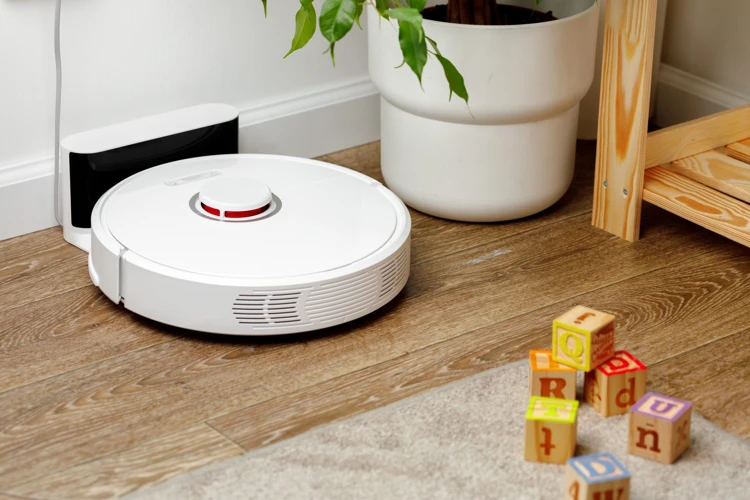
When it comes to keeping a home clean and free of allergens, traditional cleaning methods may not be sufficient. This is where smart vacuum cleaners come in, using advanced technology to effectively and efficiently remove allergens from indoor spaces. Smart vacuum cleaners work in a variety of ways to tackle allergens, including the use of high-efficiency particulate air (HEPA) filters, sensors and mapping technology, and powerful suctioning capabilities. By understanding how these features work, you can make an informed decision when selecting a smart vacuum cleaner to improve your indoor air quality and reduce allergen levels in your home.
High-Efficiency Particulate Air (HEPA) Filters
Smart vacuum cleaners are equipped with High-Efficiency Particulate Air (HEPA) filters to ensure that the air released back into the room is free of allergens. These filters are specially designed to trap particles as small as 0.3 microns, which means they can capture dust mites, pet dander, and pollen.
HEPA filters consist of tightly woven fibers that create a maze-like structure for air to pass through. As air moves through the filter, the fibers capture and trap particles. In fact, HEPA filters are so effective that they can capture up to 99.97% of particles in the air.
Here are some key benefits of using a vacuum cleaner with a HEPA filter:
| Benefit | Description |
|---|---|
| Traps allergens | The tightly woven fibers of HEPA filters can trap allergens such as dust mites, pet dander, and pollen, making the air in your home cleaner and healthier. |
| Improves air quality | By trapping particles in the air, HEPA filters can improve the overall air quality of your home, reducing symptoms of allergies and asthma. |
| Long-lasting | HEPA filters are designed to last a long time and can be reused after washing or replacing the filter cartridge. |
| Easy to maintain | HEPA filters are easy to maintain and require little upkeep beyond occasional cleaning or replacement. |
For allergy sufferers, HEPA filters are a critical component of a smart vacuum cleaner. Not only do they help to remove allergens from the air, but they also improve overall air quality. When shopping for a smart vacuum cleaner, look for models with HEPA filters to ensure that you’re getting the best possible performance.
Sensors and Mapping Technology
Smart vacuum cleaners use an array of sensors and mapping technology to navigate around your home and clean as efficiently as possible. These sensors make it possible for the vacuum cleaner to create a map of your home and understand its layout. Knowing the layout of your home allows the vacuum to clean more intelligently, saving time and energy while still providing a thorough cleaning.
One of the main sensors that a smart vacuum cleaner uses is the infrared sensor. This sensor helps the vacuum cleaner to detect obstacles and avoid collisions. The vacuum cleaner also uses a gyroscope sensor to track its movements and maintain balance while cleaning.
Another important sensor is the lidar sensor, which emits lasers to detect the distance between objects and walls in your home. This sensor is critical in creating a detailed map of your home, allowing the vacuum to clean more efficiently.
In addition to sensors, mapping technology also plays a crucial role in the functioning of smart vacuum cleaners. The SLAM algorithm (Simultaneous Localization and Mapping) helps the vacuum cleaner create a map of your home while also calculating its own position within the space. This is done by combining data from the vacuum’s sensors with information from its internal map.
By using sensors and mapping technology, smart vacuum cleaners can plan out the most efficient cleaning path and avoid repeating areas that have already been cleaned. This not only saves time and energy, but also ensures a more thorough cleaning of your home.
Here is a table summarizing the different sensors used in smart vacuum cleaners and their functions:
| Sensor | Function |
|---|---|
| Infrared sensor | Detects obstacles and avoids collisions |
| Gyroscope sensor | Tracks movement and maintains balance |
| Lidar sensor | Emits lasers to detect distance between objects and walls |
Powerful Suctioning Capabilities
Smart vacuum cleaners come equipped with powerful suction technology that effectively removes allergens from your home. Here are some ways that these vacuums achieve their powerful suction capabilities:
- Powerful Motors – Smart vacuums are designed with powerful motors that generate strong suction force, allowing them to easily pick up dirt and debris from floors and carpets. These motors are typically high-tech and energy-efficient, so you can clean your home without worrying about high electricity bills.
- Cyclonic Action – Some smart vacuum cleaners use cyclonic action to create powerful suction that pulls dirt and debris into the vacuum’s collection bin. This technique involves spinning the air and dirt inside the vacuum at high speeds, separating the dust and debris from the air and trapping it in the bin.
- Advanced Brushroll Technology – Many smart vacuum cleaners feature advanced brushroll technology that helps to dislodge dirt and debris from carpets and hard floors. The brushroll agitates the surface of the flooring, loosening up the dirt and making it easier for the vacuum to pick it up with its powerful suction technology.
- Large Dust Bins – Smart vacuums typically come with large dust bins that can hold a lot of debris. This means that you won’t have to stop your cleaning session mid-way to empty the bin, allowing you to cover more ground in less time. Some models even have self-emptying dust bins, which means you won’t have to manually empty the bin yourself.
- Adjustable Suction Levels – Some smart vacuum cleaners come with adjustable suction settings, allowing you to customize the suction power based on the surface being cleaned. This is especially useful when you’re cleaning delicate surfaces like upholstery or curtains, where too much suction can cause damage.
By combining these powerful suctioning capabilities with HEPA filters and sensors, smart vacuum cleaners can improve the air quality in your home and provide allergy sufferers with a cleaner, healthier living environment.
Benefits of Smart Vacuum Cleaners for Allergy Sufferers
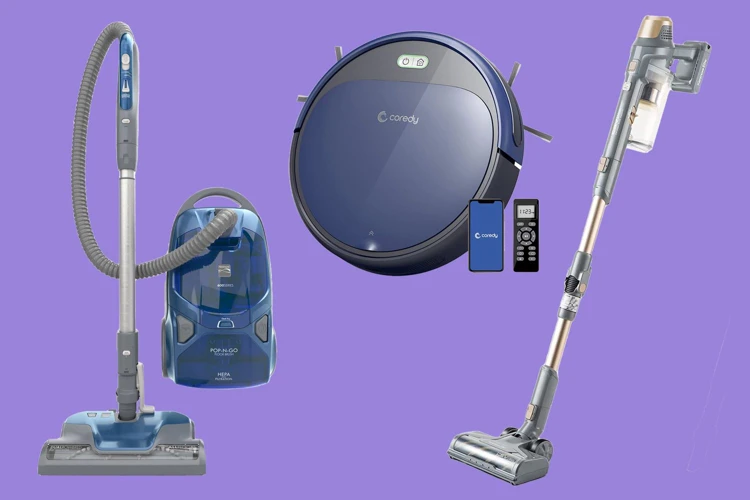
For those who suffer from allergies, maintaining a clean and allergen-free home can be a daunting task. However, the introduction of smart vacuum cleaners has made it easier to remove allergens and improve indoor air quality. These devices come equipped with advanced features that are specifically designed to combat allergens and provide numerous benefits for allergy sufferers. Let’s explore some of the key advantages of using a smart vacuum cleaner to alleviate allergens in your home.
Reduces Allergen Levels in the Home
One of the most significant benefits of using a smart vacuum cleaner is that it reduces the levels of allergens in your home, making it a healthier place to live. Allergens are tiny particles that float in the air and cause allergic reactions in sensitive individuals.
Using a regular vacuum cleaner may not effectively remove all allergens, but smart vacuum cleaners are equipped with features that help to remove even the tiniest particles from the air. A HEPA filter is one such feature that captures allergens and other particles as small as 0.3 microns.
Additionally, smart vacuum cleaners use sensors and mapping technology to navigate through your home and detect areas with high levels of allergens, such as pet dander or dust mites. The cleaner can then adjust its cleaning pattern to concentrate on these areas, ensuring that no allergens are left behind.
By using a smart vacuum cleaner, you can also ensure that allergens are not simply recirculated into the air. These cleaners have powerful suctioning capabilities that extract allergens from carpets, floors, and other surfaces, ensuring that they do not become airborne again.
The table below summarizes the ways that a smart vacuum cleaner can reduce allergen levels in your home:
| Feature | How it Reduces Allergen Levels |
|---|---|
| HEPA filter | Filters out particles as small as 0.3 microns, including allergens |
| Sensors and mapping technology | Identifies areas with high levels of allergens and concentrates cleaning in those areas |
| Powerful suctioning capabilities | Extracts allergens from surfaces and prevents recirculation into the air |
Using a smart vacuum cleaner is an effective way to reduce the levels of allergens in your home, making it a safer and healthier place for allergy sufferers.
Prevents Allergic Reactions
One of the benefits of using a smart vacuum cleaner to remove allergens is that it can help prevent allergic reactions. It is important to note that not everyone who suffers from allergies will experience the same symptoms, but some common reactions to allergens include sneezing, runny nose, itchy eyes, and skin rashes.
When allergens accumulate in your home, your risk of having an allergic reaction increases. Smart vacuum cleaners can help remove allergens before they build up, thereby reducing your risk of allergic reactions.
Smart vacuum cleaners are equipped with advanced filtration systems such as HEPA filters which can trap and remove even the smallest allergen particles from the air. By doing this, they can help prevent allergens from circulating in the air and being inhaled by you and your family members.
Another way smart vacuum cleaners can prevent allergic reactions is by reducing the population of dust mites in your home. Dust mites are a major source of allergens and can be found in bedding, carpets, and upholstery. Smart vacuum cleaners with strong suction capabilities can remove dust mites from these surfaces, further reducing your exposure to allergens.
By eliminating allergens from your home, smart vacuum cleaners can also help prevent the development of new allergies. This is particularly important for children and infants, whose immune systems are still developing and are more susceptible to allergies.
Using a smart vacuum cleaner can prevent allergic reactions by removing allergens from your home, reducing the population of dust mites, and ultimately improving your indoor air quality. It is one of the most effective methods for allergy sufferers to manage their symptoms and reduce their risk of developing new allergies.
Improves Overall Air Quality
Smart vacuum cleaners not only remove allergens from the air, they also improve overall air quality. Here are some specific ways that using a smart vacuum can lead to better air quality in your home:
- Reduction of dust and dirt: Dust and dirt particles not only look unsightly, they can actually carry toxins and pollutants that can harm your health. By removing these particles from your floors and carpets, a smart vacuum cleaner can help to improve the quality of the air you breathe.
- Elimination of pet dander: Pet dander is a common allergen that can cause respiratory problems and other health issues. Smart vacuums with high suction power and HEPA filters are especially effective at removing pet dander from your floors and carpets.
- Prevention of mold: Mold spores can be a serious health hazard, especially for people with allergies or respiratory problems. By removing moisture from floors and carpets, smart vacuums can help to prevent the growth of mold and mildew, which can contribute to poor air quality.
- Removal of other pollutants: In addition to allergens, smart vacuum cleaners can help to remove other pollutants from your home, such as tobacco smoke, chemical fumes, and volatile organic compounds (VOCs).
By improving the overall air quality in your home, a smart vacuum cleaner can help to reduce the risk of respiratory problems, allergic reactions, and other health issues related to poor indoor air quality. So if you’re looking for a way to improve the air quality in your home, investing in a smart vacuum cleaner is definitely worth considering.
Features to Look for in a Smart Vacuum Cleaner
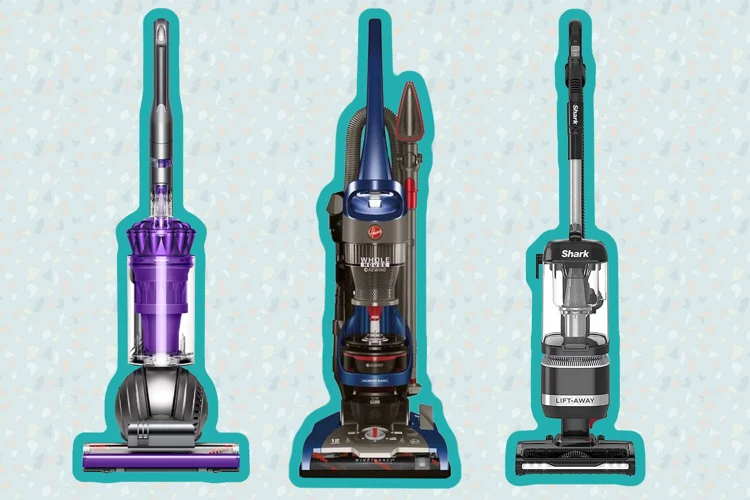
When it comes to selecting a smart vacuum cleaner that is dedicated to removing allergens and other harmful pollutants from your indoor air, there are some important features that you should consider. These features will not only improve your home’s air quality but also provide you with a more efficient and effective cleaning experience. With so many options available on the market, it can be overwhelming to determine which features are essential for your needs. But fear not, we have compiled a list of features using our research and expertise in the industry to guide you in making an informed decision. So, without further ado, let’s delve into the important features to look for in a smart vacuum cleaner.
HEPA Filters
One of the most important features to look for in a smart vacuum cleaner for allergy sufferers is the use of HEPA filters. HEPA stands for High-Efficiency Particulate Air, and these filters are designed to capture small particles that might be missed by other types of filters.
HEPA filters are made up of multiple layers of dense materials, such as fiberglass. These layers are arranged in a way that creates a maze-like path for air particles to travel through. As the air passes through the filter, the dense layers trap even very small particles, including pet dander, pollen, and dust mites. In fact, HEPA filters are capable of removing up to 99.97% of particles that are 0.3 microns or larger.
To show the effectiveness of HEPA filters, here is a comparison table of particle sizes:
| Particle Size | Type of Particle | Effectiveness of HEPA Filter |
|---|---|---|
| 10 microns and larger | Dust, pollen, pet hair | Very effective |
| 5 – 10 microns | Mold spores, pet dander, some bacteria | Effective |
| 0.5 – 5 microns | Micron-sized particles, such as dust mite feces and allergens from cockroaches | Highly effective |
| 0.3 – 0.5 microns | Certain viruses and bacteria, some smoke particles | Very highly effective |
| Less than 0.3 microns | Some viruses and bacteria, gases and vapors | Not effective |
As you can see from the table, HEPA filters are highly effective at trapping a wide range of allergens and pollutants, even those that are very small in size. This makes them an essential component for a vacuum cleaner that is designed to help allergy sufferers breathe easier.
It’s important to note that not all vacuum cleaners that claim to have HEPA filters actually meet the standards required to earn that label. Look for vacuum cleaners that have been tested and certified to meet HEPA requirements, and make sure to replace the filter regularly to ensure that it continues to function effectively. By choosing a vacuum cleaner with a high-quality HEPA filter, you can significantly improve the air quality in your home and reduce the risk of allergic reactions.
Multifunctionality
When it comes to smart vacuum cleaners, multifunctionality is an important factor to consider. It is beneficial to have a vacuum cleaner that can perform multiple tasks, such as cleaning carpets, hardwood floors, upholstery, and even pet hair. Here’s a breakdown of the different functions you should look for in a smart vacuum cleaner:
| Function | Description |
|---|---|
| Carpets | A vacuum cleaner with carpet-specific features such as adjustable height, powerful suction, and a brush roll to effectively deep clean carpets. |
| Hardwood floors | A vacuum cleaner with features such as a hard floor setting and rubberized wheels that are gentle on floors. |
| Upholstery | A vacuum cleaner that comes with attachments such as crevice tools, dusting brushes, and upholstery tools to clean soft furnishings. |
| Pet hair | A vacuum cleaner that has a powerful brush roll and specialized tools to remove pet hair from carpets and upholstery. |
Having a smart vacuum cleaner with multifunctionality means you can tackle all types of cleaning tasks in your home with just one device. This not only saves you money but also gives you convenience and ease of use. However, it’s important to note that not all vacuum cleaners have the same features, so it’s essential to compare different models and choose one that meets your specific needs.
Sensors and Mapping Technology
Smart vacuum cleaners are equipped with advanced sensors and mapping technology that make them more efficient in removing allergens and improving indoor air quality. These features allow the vacuum to navigate around the home and clean areas that need attention.
Here are some key benefits of sensors and mapping technology in smart vacuum cleaners:
- Efficient Cleaning: Smart vacuum cleaners use sensors to map out the layout of the room and create an efficient cleaning pattern. This means that the vacuum can clean the entire room without missing any spots. Additionally, sensors detect areas with high dust and allergen concentration and focus cleaning efforts on these sections.
- Customizable Cleaning: With sensors and mapping technology, smart vacuum cleaners can be programmed to clean specific areas of the home. Users can set boundaries using virtual barriers or no-go zones. These features allow for greater customization and control over the cleaning process.
- Better Navigation: Sensors in smart vacuums help them avoid obstacles and navigate around the home with ease. Smarter vacuums can detect furniture, staircases, or other items that may impede their cleaning path and adjust their movements accordingly.
- Improved Battery Life: By using sensors to navigate the home, smart vacuum cleaners conserve battery life. They can map out the most efficient routes and complete cleaning tasks more quickly, allowing them to conserve battery power and clean for longer periods of time.
- Increased User Convenience: Smart vacuum cleaners with sensors can be controlled remotely via a mobile app, allowing users to start the cleaning process from anywhere. Sensors ensure that the vacuum stops cleaning once a certain area has been cleaned, thus saving users time and energy.
Sensors and mapping technology in smart vacuum cleaners greatly improve their cleaning efficiency, and reduce allergen levels in the home. As such, allergy sufferers can breathe a sigh of relief knowing that their indoor air quality has been improved through the use of smart vacuum cleaners.
Strong Suctioning Capabilities
When it comes to removing allergens from your home, a vacuum cleaner with strong suctioning capabilities is a must-have. Here are some reasons why:
- Effective Removal of Allergens: A vacuum cleaner with strong suctioning capabilities can effectively remove even the smallest particles from your floors and surfaces. This includes allergens such as pet dander, dust mites, and pollen. The strong suction ensures that these particles are not just stirred up and redistributed into the air, but are instead effectively removed from your home.
- Thorough Cleaning: In addition to allergens, a strong vacuum can also remove dirt, debris, and other particles from your floors and surfaces. This ensures that your home is not just free of allergens, but is also thoroughly clean and healthy for you and your family.
- Time-Saving: A vacuum with strong suctioning capabilities can make cleaning your home faster and more efficient. With the ability to remove particles quickly and effectively, you can spend less time cleaning and more time enjoying your home.
- Durable and Long-Lasting: A vacuum with strong suctioning capabilities is often built to last, with durable materials that can withstand heavy use. This means that your vacuum can provide years of reliable use, ensuring that your home remains clean and healthy for the long-term.
When choosing a smart vacuum cleaner, make sure to consider its suctioning capabilities as one of the important features. Look for models with high-powered motors and strong suctioning power to ensure that your home is thoroughly cleaned and free from allergens.
FAQs About Smart Vacuum Cleaners and Allergens
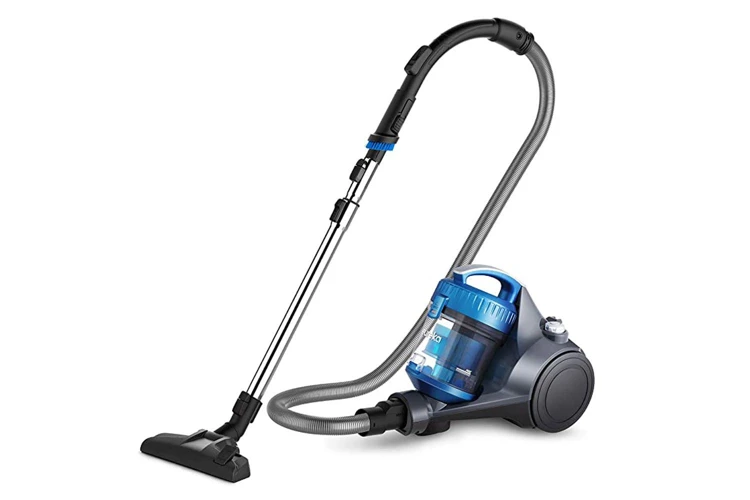
As with any new technology, there are often questions that arise surrounding smart vacuum cleaners and their ability to remove allergens from your home. It can be confusing to navigate the various features and options available on the market, especially if you’re an allergy sufferer looking to improve your indoor air quality. To help clear up some of this confusion, we’ve compiled a list of frequently asked questions (FAQs) about smart vacuum cleaners and their role in reducing allergens in the home. Let’s explore the answers together.
How often should I vacuum my home to reduce allergen levels?
Maintaining a clean and allergen-free home requires regular cleaning, including vacuuming. The frequency of vacuuming depends on various factors like the number of people living in the home, the presence of pets, and the level of foot traffic. The table below provides a general guideline for how often one should vacuum to reduce allergen levels in the home.
| Low Traffic Areas | High Traffic Areas | |
|---|---|---|
| No pets, No allergies | Once a week | Twice a week |
| Pets, No allergies | Twice a week | Daily |
| No pets, Allergies | Twice a week | Three times a week |
| Pets, Allergies | Three times a week | Daily |
It’s important to note that a smart vacuum cleaner can make the task of maintaining a clean and allergen-free home much easier. Smart vacuums can detect and target allergen-rich areas and schedule regular cleanings based on the home’s unique needs. Additionally, some smart vacuum cleaners come equipped with HEPA filters that are capable of trapping tiny allergen particles that traditional filters cannot.
Ultimately, the frequency of vacuuming required to reduce allergen levels in the home varies based on a variety of factors. Adopting a regular cleaning routine and investing in a smart vacuum cleaner can significantly improve indoor air quality and reduce allergen-related health issues.
What types of flooring are best for allergy sufferers?
Flooring Types Recommended for Allergy Sufferers
For individuals with allergies, certain types of flooring can exacerbate symptoms such as sneezing, coughing, and itchy eyes. Here are some flooring options that are recommended for allergy sufferers:
| Flooring Type | Benefits |
|---|---|
| Hardwood | Easy to clean and doesn’t trap allergens like carpet does |
| Tiles | Does not absorb allergens, can be easily wiped clean |
| Vinyl | Does not absorb dust or mold, can be easily cleaned |
| Cork | Naturally resistant to mold and mildew and doesn’t attract dust or dirt as easily as carpet |
| Laminate | Does not harbor dust, dirt, or allergens |
Note: It’s important to keep in mind that even with the right type of flooring, allergens can still accumulate. Regular cleaning with a smart vacuum cleaner can help keep allergen levels low and improve indoor air quality.
Do all smart vacuum cleaners come with HEPA filters?
HEPA filters are a key feature of smart vacuum cleaners that can remove allergens and improve indoor air quality. HEPA filters are designed to trap tiny particles, as small as 0.3 microns, that can cause respiratory problems and allergies. However, not all smart vacuum cleaners come with HEPA filters.
Here are some important factors to consider when shopping for a smart vacuum cleaner with HEPA filters:
- Brand: Some top brands of smart vacuum cleaners, such as Dyson, Roomba, and SharkNinja, have models that come with HEPA filters as standard.
- Price: Budget-friendly models of smart vacuum cleaners may not come with HEPA filters, while more expensive models may have advanced filtration systems.
- Specifications: When shopping for a smart vacuum cleaner, be sure to check the product specifications to see if it comes with a HEPA filter or if one can be added.
It is important to note that having a HEPA filter does not guarantee complete removal of allergens, but it is a significant feature that can help reduce allergen levels in the home.
Tips for Using a Smart Vacuum Cleaner for Allergy Sufferers
Keeping your home clean and free of allergens is vital for those who suffer from allergies. A smart vacuum cleaner can help alleviate some of the symptoms, but it’s important to know how to use it effectively. In this section, we’ll provide you with some tips and tricks for using your smart vacuum cleaner to reduce allergen levels in your home and improve your indoor air quality. By following these simple steps, you can breathe easier and enjoy a cleaner, healthier home.
Vacuum at least once a week
Keeping your home allergen-free requires regular cleaning, and vacuuming at least once a week is essential to reducing allergen levels. To ensure that you are effectively removing allergens with your smart vacuum cleaner, here are some tips on how to vacuum at least once a week:
| Tip | Explanation |
|---|---|
| Move furniture | Moving furniture will allow you to access areas where allergens may be hiding, such as under the sofa or bed. |
| Vacuum floors and carpets thoroughly | Make sure you move the vacuum in a back-and-forth motion, going over each area multiple times to ensure that dirt and allergens are fully removed. |
| Use attachments to clean upholstery and drapes | Allergens don’t just accumulate on floors and carpets; they can also be found on upholstered furniture and drapes. Use the appropriate attachments provided by your smart vacuum cleaner to clean these surfaces as well. |
| Empty the dustbin or replace the bag | When your vacuum cleaner’s dustbin is full, it can reduce its suction power and cause allergens and dust to spill back into the air. Empty the dustbin or replace the bag frequently to ensure that your vacuum cleaner is working effectively. |
By following these tips and vacuuming at least once a week with your smart vacuum cleaner, you’ll be able to significantly reduce allergen levels in your home, leading to improved indoor air quality and better health for you and your family.
Choose a vacuum with a HEPA filter
When it comes to choosing a smart vacuum cleaner for allergy sufferers, one of the most important features to look for is a HEPA filter. HEPA stands for High-Efficiency Particulate Air and these filters are designed to capture particles as small as 0.3 microns in size, including common allergens like dust mites, pollen, and pet dander.
Here are some reasons why it is important to choose a vacuum with a HEPA filter:
- HEPA filters can trap a wide range of allergens, making them an ideal choice for allergy sufferers.
- Filters that are not HEPA-rated or are of inferior quality, can allow tiny allergen particles to be released back into the air, potentially worsening allergy symptoms.
- HEPA filters actually improve indoor air quality by removing allergens from the air inside your home.
Here are some tips for choosing a vacuum with a HEPA filter:
- Make sure the vacuum’s HEPA filter is rated to trap particles that are 0.3 microns or smaller.
- Look for a vacuum with a certified HEPA filter to ensure that it meets industry standards.
- Check that the vacuum’s motor is strong enough to support the use of a HEPA filter, as these filters can reduce suction power in some models.
- Be aware that some vacuums may have a HEPA-style filter, which may not be as effective as a true HEPA filter.
Choosing a smart vacuum cleaner with a HEPA filter is critical for allergy sufferers who want to improve their indoor air quality and reduce exposure to common allergens. When shopping for a vacuum cleaner, look for models with HEPA filters that are certified and rated to trap small particles, and ensure that the vacuum’s motor is strong enough to support the use of a HEPA filter.
Use the vacuum to clean upholstered furniture as well as floors
It’s not just the floors that accumulate allergens; upholstered furniture can also harbor dust mites and pet dander. The good news is that many smart vacuum cleaners come with attachments specifically designed for cleaning upholstery.
Why Clean Upholstered Furniture?
Upholstered furniture like sofas, chairs, and mattresses can be a breeding ground for allergens. Dust mites, pet dander, and even mold can accumulate in the fibers of the fabric, leading to allergic reactions and other health problems.
How to Clean Upholstered Furniture?
Using a vacuum cleaner with upholstery attachments, such as a crevice tool or an upholstery tool, is the best way to remove allergens from upholstered furniture. Here are some tips:
| Tip | Description |
| 1. | Vacuum regularly |
| 2. | Use the right attachments |
| 3. | Vacuum in different directions |
| 4. | Spot clean stains immediately |
1. Vacuum regularly: Regular vacuuming helps to prevent the accumulation of allergens in upholstered furniture. Aim to vacuum your furniture weekly or bi-weekly, depending on how much it’s used.
2. Use the right attachments: Your vacuum cleaner should come with an upholstery tool or crevice tool that’s designed to clean fabric surfaces. Use these attachments to vacuum your furniture, making sure to get into all the nooks and crannies.
3. Vacuum in different directions: To ensure that you’re picking up as much dust and dirt as possible, vacuum in different directions. This will help to loosen any debris that’s embedded in the fabric.
4. Spot clean stains immediately: If you spill something on your furniture, it’s important to clean it up immediately. Blot up the excess liquid with a clean cloth, then spot clean the stain with a mild solution of water and detergent. Be careful not to saturate the fabric, as this can lead to mold growth.
Conclusion
Cleaning upholstered furniture with a smart vacuum cleaner is an effective way to reduce allergen levels in your home. By following the tips above and using the right attachments, you can keep your furniture free from dust mites, pet dander, and other allergens.
Conclusion
After going through the detailed description of how smart vacuum cleaners remove allergens and improve indoor air quality, it is evident that these devices offer incredible benefits for allergy sufferers. Smart vacuum cleaners equipped with HEPA filters, sensors, and mapping technology, and powerful suction capabilities are highly effective in reducing allergen levels in the home environment. Not only do they help prevent allergic reactions, but they also improve overall air quality.
When choosing a smart vacuum cleaner, you should prioritize models that feature HEPA filters, multifunctionality, sensors, mapping technology, and strong suctioning capabilities. It is crucial to vacuum at least once a week and use the vacuum to clean upholstered furniture as well as floors to achieve the best results.
In conclusion, smart vacuum cleaners are an excellent investment for allergy sufferers who seek to maintain a clean and healthy living environment. By selecting the right vacuum cleaner and implementing best practices, you can effectively reduce allergen levels in your home, improve air quality, and prevent allergic reactions. Say goodbye to sneezing and coughing, and enjoy a healthier life with a smart vacuum cleaner.
Frequently Asked Questions
How long do HEPA filters last in a smart vacuum cleaner?
The lifespan of a HEPA filter depends on the frequency of usage and the level of allergens present in the home. However, on average, a HEPA filter can last up to six to twelve months.
Can smart vacuum cleaners remove pet hair?
Yes, smart vacuum cleaners are designed not only to clean up pet hair, but also to remove dander and other allergens that may cause respiratory problems for some individuals.
Do smart vacuum cleaners work on carpets?
Yes, most smart vacuum cleaners are equipped with powerful suctioning capabilities and can work on various types of flooring including carpets, rugs, and hardwood floors.
Can smart vacuum cleaners clean under furniture?
Yes, many smart vacuum cleaners are designed to clean under furniture with their slim profiles and intuitive mapping technology.
How do I know if my smart vacuum cleaner needs to be emptied?
Most smart vacuum cleaners have sensors that can detect when the dustbin or canister is full, and will alert you to empty it. However, it’s best to check the dustbin periodically to ensure it’s not overflowing.
Can smart vacuum cleaners be controlled remotely?
Yes, many smart vacuum cleaners can be controlled remotely using an accompanying app on your smartphone or through voice control assistants like Amazon Alexa or Google Assistant.
What is the average battery life of a smart vacuum cleaner?
The average battery life of a smart vacuum cleaner can vary between brands and models, but typically ranges from 60 to 120 minutes on a single charge.
Are there any health risks associated with using a smart vacuum cleaner?
No, there are no known health risks associated with using a smart vacuum cleaner. However, it’s important to follow the manufacturer’s safety guidelines and use the vacuum in a well-ventilated area.
Do smart vacuum cleaners make a lot of noise?
The noise level of smart vacuum cleaners can vary depending on the brand and model. However, many smart vacuum cleaners are designed to operate at a low decibel level, making them quiet and unobtrusive.
Can smart vacuum cleaners be programmed to clean at specific times?
Yes, many smart vacuum cleaners have the ability to be programmed to clean at specific times using an accompanying app or remote control.

